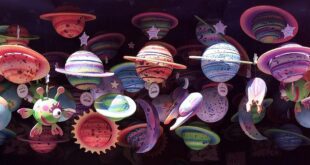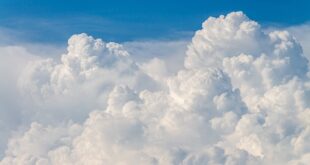The Magic of Soil: From Dirt to Dynamic Ecosystems
Soil is a seemingly inert and lifeless thing, just a mix of sand, clay, and organic matter, but look a little closer, and you’ll discover it’s bursting with vitality and wonder, continually transforming itself in incredible ways to create dynamic ecosystems. From sustainer to ecosystem builder, let’s delve into the world of soil and be amazed at all it can do!
Sustaining Life Through the Nitrogen Cycle
Nitrogen is essential to living organisms, from plants to animals, and Even we need it to stay living. However, our planet’s atmosphere is made mostly of nitrogen gas, a form that is unusable by living creatures. Nature made it work through the miraculous nitrogen cycle. Nitrogen-fixing bacteria found in the soil create nitrogen compounds that can be absorbed by plant roots, making it possible for the plant to grow fruits and nuts that can be consumed by animals, which, in turn, produce nitrogen-compound-rich waste that fertilizes the soil. All of these interdependencies and interactions ensure a constant and reliable supply of nitrogen within an ecosystem that benefits all of its living members.
Dirt to Diamonds: Transformations in Mineral Uptake
Have you ever heard someone say that spinach is rich in iron or nuts are rich in magnesium? They are not joking! Trace minerals like calcium, zinc, copper, and magnesium occur naturally within soil, and it is what feeds all the living creatures in an ecosystem. Plants absorb these minerals through their root’s and design their architecture and flavor profile based on what concentrations they absorb as they grow. Consequently, many culinary parameters such as taste, texture, acidity level, and even the color of food owe their variations to the richness of the mineral deposits found within the soil within an ecosystem.
The Carbon Cycle: Building Ecosystems
Carbon is where the magic truly begins, and soil is vital for the transformation into a dynamic ecosystem where beings from different kingdoms thrive, interconnected and symbiotic with the environment around them. The Carbon cycle uses photosynthesis and respiration, nature’s magical tools, to make this happen. During photosynthesis, plant life everywhere takes in carbon dioxide and transforms it into organic carbon. These throughplants release some of the carbon back into the atmosphere through respiration. The carbon left within the organic matter accumulates within the soil as humus, fueling microbial growth, enhancing plant growth, and building an excellent playground for biodiversity. Thanks to – and enabled by – carbon, the soil becomes the backbone that links living and non-living components within an ecosystem, a key player in transforming fleeting soil-adjacent habitats into dynamic ecosystems buzzing with life.
The Ultimate Miracle: The Potential of Regenerating the Soil
Soil is hacked and compressed with compaction, laden with unnatural chemical toxins from industrial agriculture, but with a little restoration, natural soil functionality that benefits everyone can return. Regenerative agriculture combines natural forests canopy practices on crops’ methods to rebuild soil biology accurately restores soil microbial activities, allowing plants to get more efficient and healthy mineral uptake critical to all living organisms’ wellbeing. Additionally, re-establishing more organic matter in our soil by moving to more planet-based diets can make a massive difference in making the soil work despite deforestation, natural disasters, miss farming practices among others creating more substantial harsh conditions. Also, planting cover crops and reducing tillage protective cover crops and reduces pressure on ecosystems and natural resources helping farming activities thrive with less deep cuts on soil surfaces.
Conclusion
From humble beginnings in the dirt, we discovered soil’s natural functions and how they benefit living organisms from birds to cattle, underscoring soil’s importance to all. The power of carbon within ecosystem and natural regeneration is the ultimate deciding factor in achieving that buzzing mass of wildlife completely works reasonably as it should from the early stages of development signifying sustainability’s crucial edge over everything. Despite the sway that pollutants and other human-practices have put it, elemental wonders like nutrient cycle, vital trace elements in establishing an ecosystem, carbon cycle, and regenerative practices still can transform soil to yield powerful, humbling outcomes that resist degradation, boosting biodiversity and memorable plant and animal life. Create healthy, dynamic soil promoting life above and below the ground level is key to having a prosperous future together.
 Mind Uncharted Explore. Discover. Learn.
Mind Uncharted Explore. Discover. Learn.




